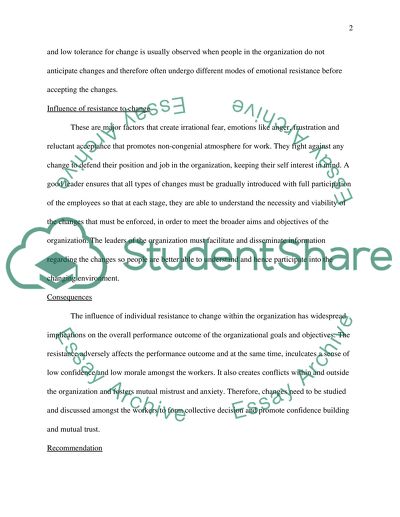Cite this document
(“Examine and discuss the influence of individual resistance to change, Essay”, n.d.)
Retrieved from https://studentshare.org/miscellaneous/1552092-examine-and-discuss-the-influence-of-individual-resistance-to-change-potential-sources-of-stress-and-consequences-in-organizations-recommend-approaches-to-managing-change-and-stress
Retrieved from https://studentshare.org/miscellaneous/1552092-examine-and-discuss-the-influence-of-individual-resistance-to-change-potential-sources-of-stress-and-consequences-in-organizations-recommend-approaches-to-managing-change-and-stress
(Examine and Discuss the Influence of Individual Resistance to Change, Essay)
https://studentshare.org/miscellaneous/1552092-examine-and-discuss-the-influence-of-individual-resistance-to-change-potential-sources-of-stress-and-consequences-in-organizations-recommend-approaches-to-managing-change-and-stress.
https://studentshare.org/miscellaneous/1552092-examine-and-discuss-the-influence-of-individual-resistance-to-change-potential-sources-of-stress-and-consequences-in-organizations-recommend-approaches-to-managing-change-and-stress.
“Examine and Discuss the Influence of Individual Resistance to Change, Essay”, n.d. https://studentshare.org/miscellaneous/1552092-examine-and-discuss-the-influence-of-individual-resistance-to-change-potential-sources-of-stress-and-consequences-in-organizations-recommend-approaches-to-managing-change-and-stress.


